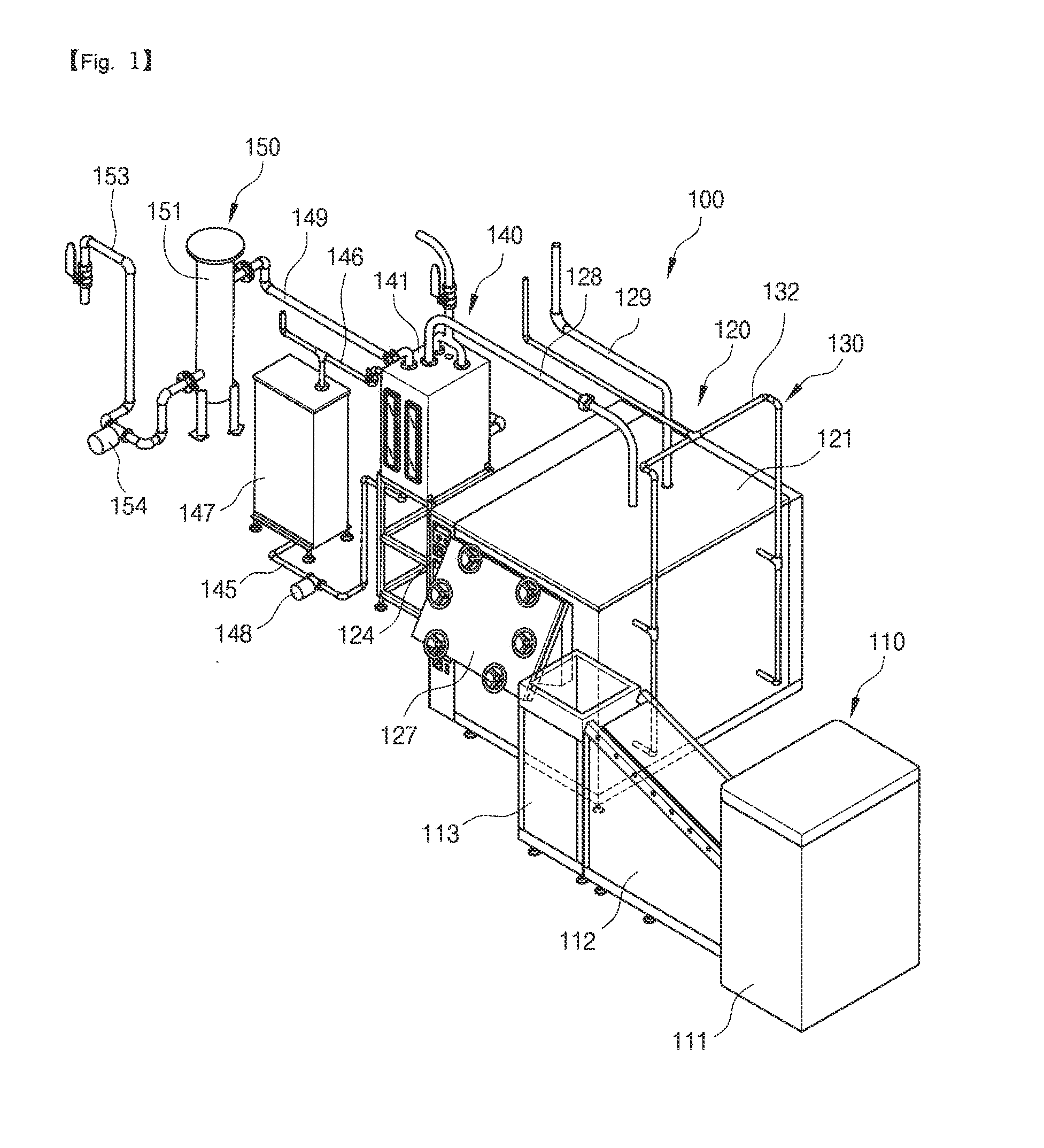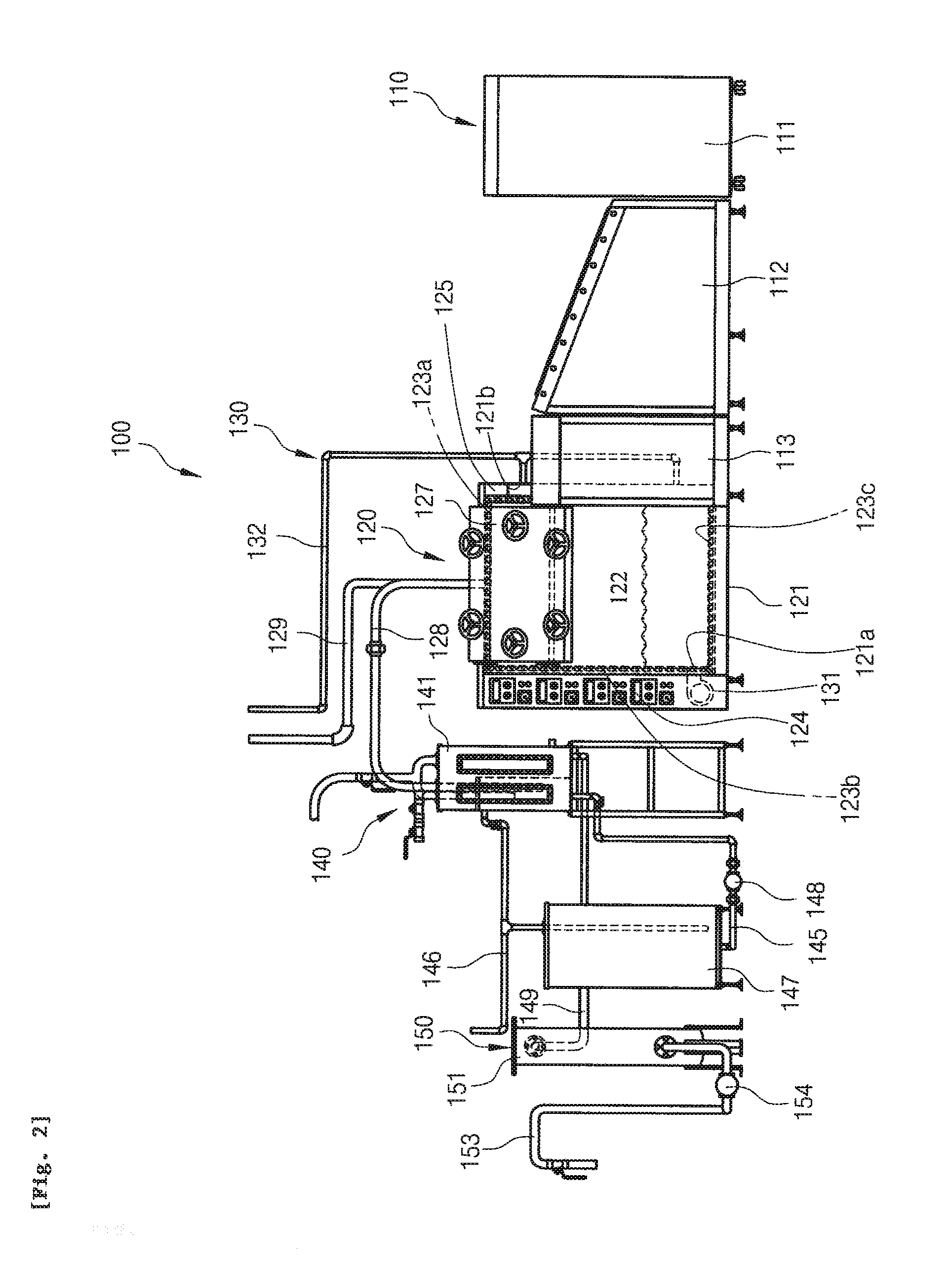Apparatus for restoring waste plastic to oil
a technology of waste plastic and oil, applied in the field of apparatus for restoring waste plastic to oil, can solve the problems of waste plastic not being buried easily, not decomposing easily, and the disposal problem of waste plastic growing daily, so as to reduce pyrolysis gas, reduce waste plastic, and heat the decomposition space efficiently
- Summary
- Abstract
- Description
- Claims
- Application Information
AI Technical Summary
Benefits of technology
Problems solved by technology
Method used
Image
Examples
Embodiment Construction
[0042]As exemplary shown in FIGS. 1-3, an apparatus (100) for restoring waste plastic to oil in accordance with an exemplary embodiment of the claimed invention comprises a crush producing part (110), a pyrolyzing part (120), a furnace cooling part (130), an oil reduction part (140), and a filter and emission part (150).
[0043]In accordance with an exemplary embodiment of the claimed invention, the crush producing part (110) comprises a crusher (111), a crushing conveyer (112) and a storage tank (113), as exemplary shown in FIGS. 4-5. The crusher (111) in accordance with an exemplary embodiment of the claimed invention is configured such that at higher position crushed waste plastic is produced by crushing the waste plastic from outside to inside. Preferably, the crusher (111) produces waste plastic towards the direction of the crushing conveyor (112). It is appreciated that any known crusher can be used with the claimed apparatus, and details of various known crushers are well known...
PUM
| Property | Measurement | Unit |
|---|---|---|
| area | aaaaa | aaaaa |
| volume | aaaaa | aaaaa |
| pressure | aaaaa | aaaaa |
Abstract
Description
Claims
Application Information
 Login to View More
Login to View More - R&D
- Intellectual Property
- Life Sciences
- Materials
- Tech Scout
- Unparalleled Data Quality
- Higher Quality Content
- 60% Fewer Hallucinations
Browse by: Latest US Patents, China's latest patents, Technical Efficacy Thesaurus, Application Domain, Technology Topic, Popular Technical Reports.
© 2025 PatSnap. All rights reserved.Legal|Privacy policy|Modern Slavery Act Transparency Statement|Sitemap|About US| Contact US: help@patsnap.com



